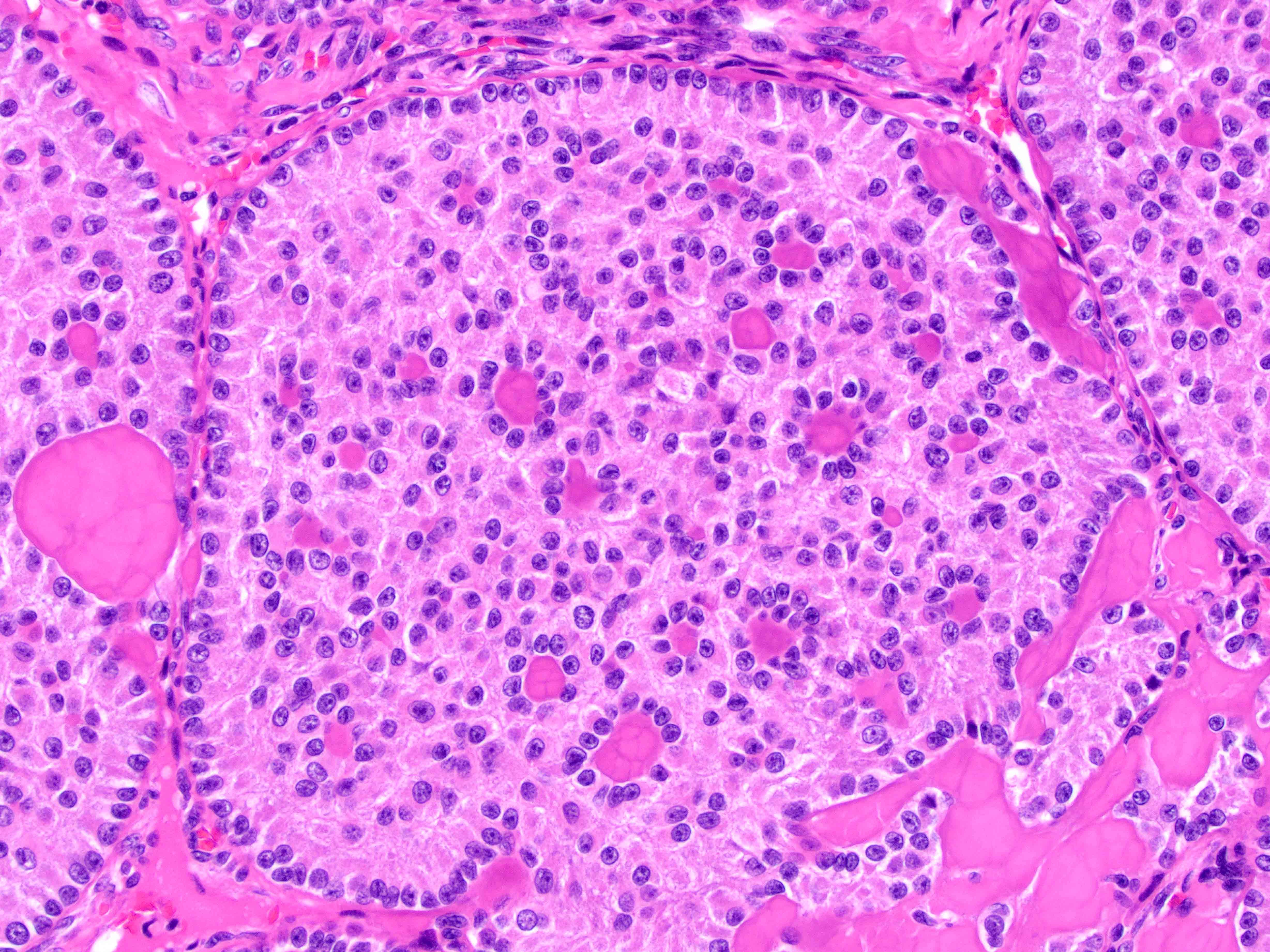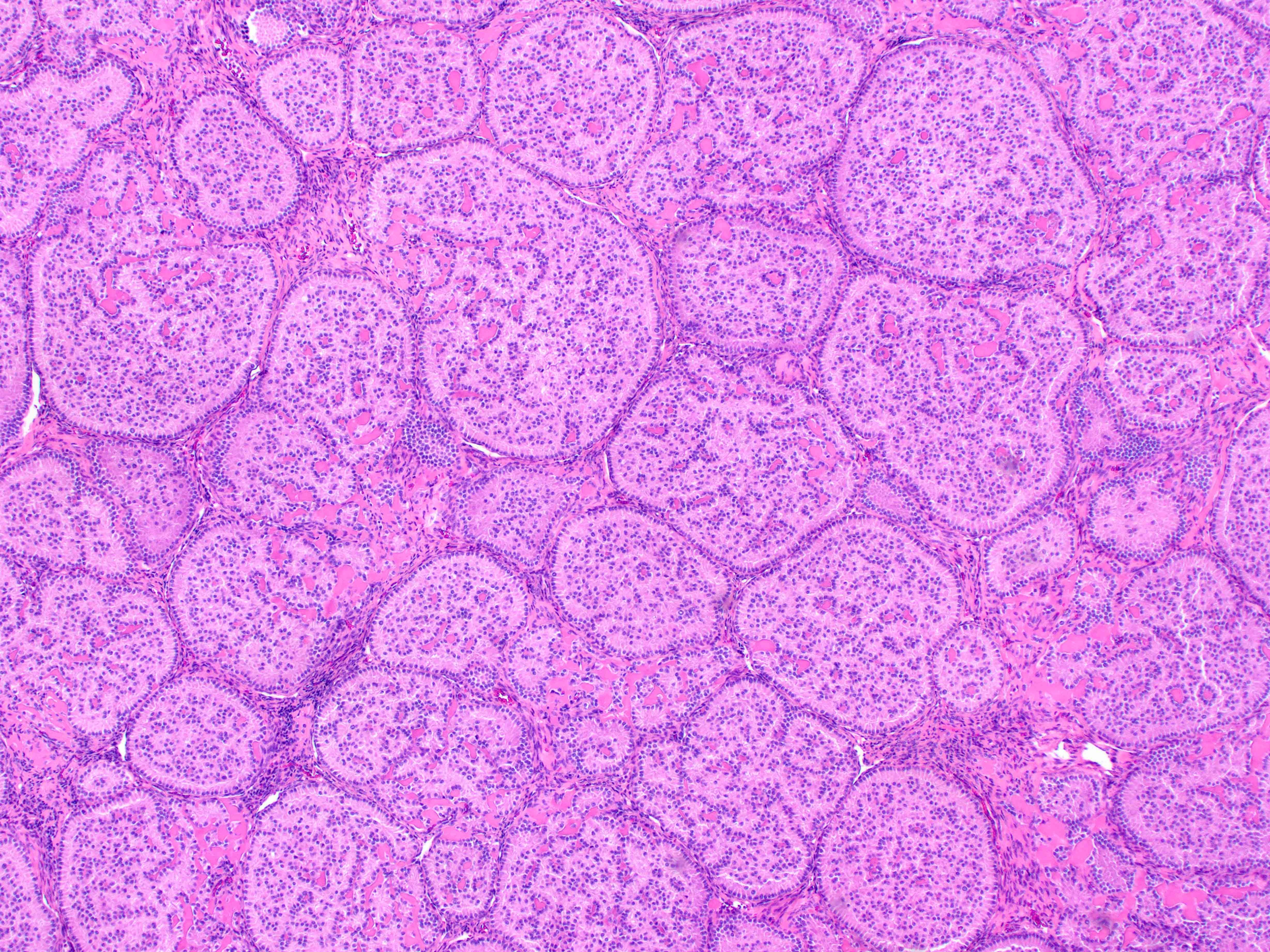

Case history: 17-year-old female with large, solid adnexal mass.
What is the diagnosis?
- Germ cell tumor
- Carcinoid tumor arising in mature teratoma.
- Sex cord-stromal tumor.
- Endometrioid carcinoma arising in endometriosis.
Answer:
Correct answer “C”. Sex cord stromal neoplasm.
Discussion:
The morphologic features are typical of sex cord tumor with annular tubules (SCTAT). These tumors are rare and account for less than 1% of sex cord stromal tumors of the ovary. Approximately two thirds of SCTATs occur sporadically with wide age range at presentation and about one third is seen in patients with Peutz-Jeghers syndrome (germline mutation in STK11 gene), who are generally younger. Tumors associated with Peutz-Jeghers syndrome are usually bilateral, small (open microscopic) and multifocal. In contrast, sporadic tumors are typically larger than 3 cm in size and unilateral.
The tumor is composed of nodular aggregates and islands of simple or complex annular tubules that lack lumina. The cells lining the tubules have typical antipodal arrangement of the nuclei. Cores of eosinophilic hyalin material are seen within the nodules that are embedded in the dense hyalinized stroma. Immunohistochemical profile, although IHC is not necessarily required for diagnosis, is typical of what is expected for ovarian sex cord tumor (i.e. positive inhibin, calretinin, SF-1, WT-1 and negative EMA).
Tumors associated with the syndrome are almost invariably benign. However, approximately 20% of sporadic tumors have a low grade malignant course.
References:
Kurman et al. WHO Classification of Tumors of Female Reproductive Organs. 4th edition. International agency for Research on Cancer, Lyon 2014
Case contributed by Anna Yemelyanova, M.D., Professor, Anatomic Pathology, UAB Department of Pathology